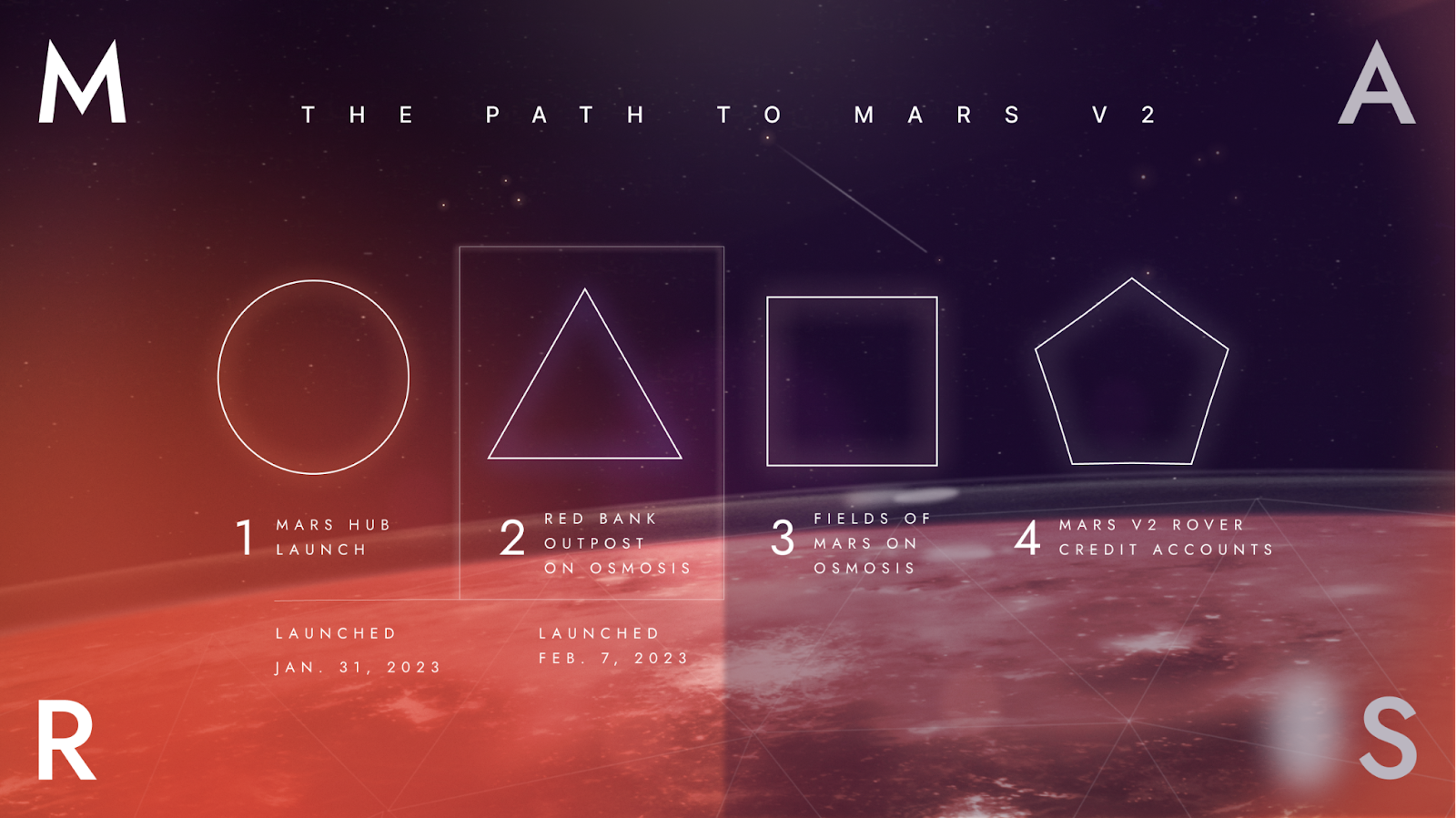Launch Sequence
On January 31, Mars Hub mainnet went live with an initial genesis set of sixteen trusted and experienced validators: Block Pane, Chill Validation, Chorus One, Cosmology, CryptoCrew Validators, ECO Stake, Imperator.co, Injective, Jabbey, Needlecast, Notional, Oni, P2P Validator, polkachu, Simply Staking, Smart Stake. After the first red block, 34 additional validators joined the active set, with a max of 50 total validators in the active set.
After a successful governance vote on Osmosis, Mars’ first Outpost was established on Feb 7th, expand the growing DeFi ecosystem on Osmosis by enabling the Red Bank with support for the borrowing and lending of ATOM, axlUSDC and OSMO.
A fully-fledged Mars Outpost consists of three components released in phases:
- The Red Bank (Finished): A lending protocol
- The Fields of Mars: Individually-collateralized leveraged yield farming vaults
- Rover: A cross-collateralized credit account protocol

After at least two weeks of stable operation, the Martian Council can potentially activate the Farm on-chain. That will give explorers the ability to enter leveraged yield farming (LYF) vaults for token pairs including OSMO-ATOM with a few mouse clicks.
Initially, each LYF position will require its own isolated collateral. Later, the Martian Council can opt to enable cross-collateralized credit accounts dubbed Rovers. Designed to give their pilots DeFi superpowers, Rovers are engineered to support virtually every activity users might encounter on centralized exchanges (pending approval by the Martian Council): spot trading, margin trading, lending and borrowing — all in a single decentralized credit account on Osmosis that’s represented by a transferable NFT.